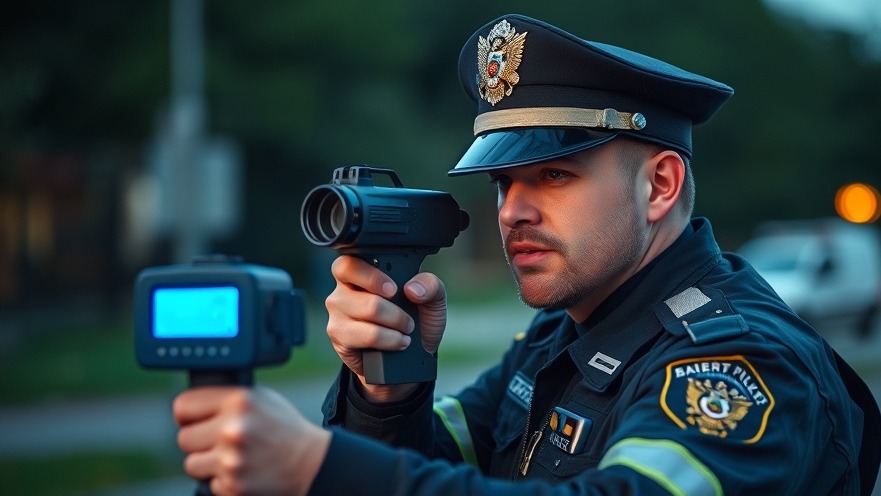
Why Speed Limits Matter for Community Safety
Understanding and obeying speed limits is not merely an obligation; it is a community commitment to safety. As roads in Austin get busier, especially along high-traffic areas like FM 2222, the risks associated with speeding escalate. Speeding can lead to severe accidents, impacting not just the driver, but also innocent pedestrians, cyclists, and other motorists.
Motorists who disregard speed limits contribute to a cycle of recklessness that often translates into complaints from community members who feel unsafe in their neighborhoods. The Austin Police Department (APD) recognizes this issue as a growing concern, prompting their recent emphasis on enforcement in traffic-heavy areas. By following posted speed limits, drivers can significantly reduce the risk of accidents and enhance the community's overall safety.
The Role of Enforcement in Safer Roads
In response to heightened complaints regarding speeding and reckless driving, the APD has implemented targeted enforcement strategies on FM 2222. This proactive approach aims to mitigate dangerous behaviors that compromise public safety. Operating in conjunction with the Texas Department of Public Safety (DPS), APD officers will focus patrols over weekends—often peak times for racing and aggressive driving. Following safety measures not only supports law enforcement efforts but directly contributes to a culture of responsible driving.
Increased Patrols: With the APD taking a zero-tolerance approach, the increased visibility of law enforcement is expected to deter speeding.
Community Engagement: Local citizens are encouraged to report reckless behaviors, establishing a teamwork mentality between residents and law enforcement.
Weekend Operations: APD’s collaboration with DPS means that traffic enforcement will double, providing robust oversight during high-risk periods.
What We Can Learn from the APD's Initiative
The initiatives employed by Austin’s law enforcement serve as a case study for other communities facing similar issues. As cited, increased enforcement isn’t solely about punishing offenders; it is about promoting long-term behavioral changes among drivers.
Your role as a responsible driver encompasses understanding the impact of your actions on the community. Here are a few key takeaways that individuals can implement:
Be Proactive: Pay attention to speed limits, especially in residential areas.
Report Recklessness: If you notice aggressive driving, inform local authorities to enhance community safety.
Engage with Community Initiatives: Get involved in local traffic safety discussions and contribute to a safer Austin.
Future Directions: Building a Culture of Safety
The efforts by APD are just the beginning. While they target the symptom (speeding), there is an opportunity for addressing the root causes of aggressive driving behaviors. Engaging in community dialogues, implementing educational campaigns, and fostering an inclusive atmosphere for feedback can significantly enhance public safety.
Moreover, local government and organizations can leverage technology to develop smarter traffic management systems, providing real-time feedback on traffic conditions, which can reinforce safe driving habits. Ultimately, creating a culture of safety requires a strong partnership among law enforcement, local governments, residents, and the driving public.
In conclusion, the campaign by the Austin Police Department should not only be viewed as a temporary measure but as a catalyst for a community-wide change in driving behaviors. It is a reminder that safety on our roads is not just a personal responsibility but a collective one. As Austin continues to grow, maintaining this heightened emphasis on traffic enforcement will be essential for ensuring that every citizen can navigate their city safely.
Take action now: If you haven’t yet, review the speed limits in your area and commit to being a responsible driver. Together, we can create safer roads for everyone.
 Add Element
Add Element  Add Row
Add Row 



Write A Comment